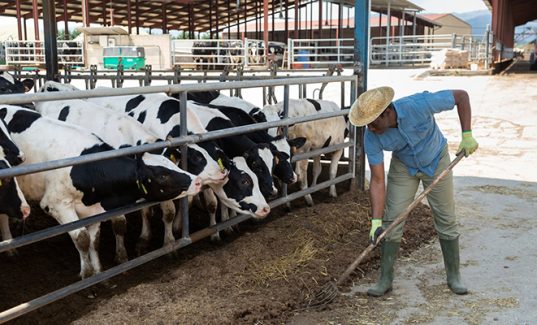CORCORAN, Calif. – Virtus Nutrition unveiled today a newly developed “Omega Balancer” app, providing a powerful, yet simple, tool for dairy nutritionists and producers to better balance for the essential omega-6 and omega-3 nutrients in their dairy diets.
A tremendous amount of research on omega fatty acids in dairy cattle has been performed over the past decade, with the University of Florida and Dr. Bill Thatcher’s lab leading the charge. While there is always more work to be done, Thatcher and his team have demonstrated consistent and repeatable results in milk, reproduction and immune health through altering the omega-6 to omega-3 ratio in dairy cattle diets.
In numerous dairy industry presentations, Dr. José Santos, a dairy science professor and researcher at University of Florida has detailed the positive effects of altering the omega-6 to omega-3 ratio on lactation performance and immune response.
“Since it is found that these fatty acids can play such a vital role in dairy cow health and performance, the Omega Balancer will be a valuable app for nutritionists to merge with their dairy ration software for daily use,” says Kevin Murphy, global technical director for Virtus Nutrition.
“Dairy cow diets are composed of carbohydrates, proteins and fat. The fat component has often been treated as a negative in the diet. But knowing what we know now – the impact of omega-6 and omega-3 fatty acids, when properly balanced, has opened up a whole new understanding of their positive potential,” Murphy declares.
“Omega 6 and omega 3 fatty acids are required nutrients in the diet, however we’ve never balanced for them. Increasing the omega-6 to omega-3 ratio pre-fresh and decreasing the ratio post-fresh improves milk production and reproduction. Omegabalancer.com provides a quick and comprehensive view of where your omega balance is and gives guidance on how to manage it for optimum productivity,” Murphy explains.
A nutritionist can enter either their ration ingredients or the results from a TMR fatty acid profile analysis. Then, the Omega Balancer app calculates the ratio and gives explanations of the results.
“Since Omega-6s are pro-inflammatory and Omega-3s are anti-inflammatory, it is the balance of the two, which plays a major role in regulating the immune status of an animal,” says Murphy. “Too many Omega-6s in a lactating cow diet means too much energy wasted in maintaining an overly ‘ready’ immune system. Omega-6s are often overabundant in lactating cow rations, and underfed in transition diets.”
Omega-6s are found in common feedstuffs, including cottonseed, corn, corn silage, and distiller’s grain. Omega-3s are found in common feedstuffs, including fishmeal, flax seed, and pasture grass, and not all omega 3s sources are the same. Three types of omega-3s are: ALA (plant-based, i.e. flax), EPA and DHA (marine oil based, i.e. fish meal). Research showing significant improvements in reproduction and early milk has been specifically attributed to feeding EPA/DHA Omega-3s.
Research done feeding a calcium salt of fatty acid supplement high in EPA/DHA omega-3s (Strata by Virtus Nutrition) shows early lactation milk responses are linear to amount of Strata fed, with 10.8 pounds of early milk at the highest feeding rate of 4/10th lb. Reproductive research at the ¼ lb. feeding rate yields significant reductions in early aborts and improvements in early conception.
Another calcium salt of fatty acid supplement (Prequel by Virtus Nutrition) is high in omega-6s and when fed at just a ¼ lb. in a 21-day close-up diet delivers significant improvements in transition performance and in first-service conception rates, university researchers found.
When using these supplements to balance rations, research shows the ideal ratio of Omega-6s to Omega-3s in lactating cattle is 5:1 or less. In pre-fresh diets, the ideal ratio is the opposite, with the goal of being at 15:1 or greater omega-6s to omega-3s.
To download the new Omega Balancer app, go to www.omegabalancer.com and see how it might impact your feeding protocols and your bottom line. For more information, email Kevin Murphy,kmurphy@dairy1to1.com.
Source: Virtus Nutrition/Goble Communications




